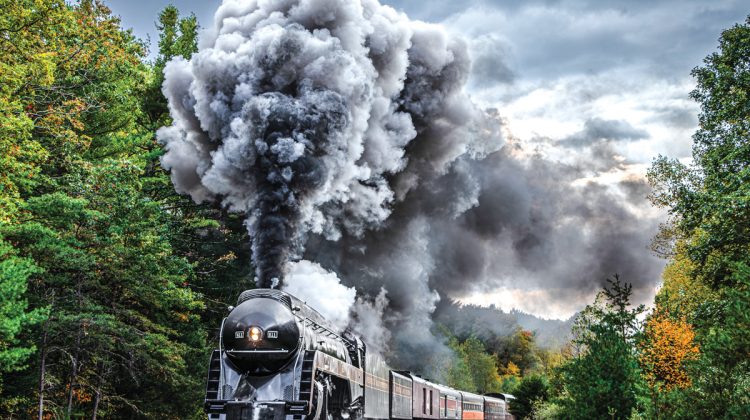
I — get this out of the way up front: you need to come to the Twin Valley Riders Rally next September. If you can’t have a good time there, you’re not trying.
It’s typically a fun journey getting there, riding across western Virginia without a single traffic light beyond my neighborhood, but a beautiful Thursday afternoon in mid-September, my progress was impeded by a yellow Montgomery County school bus disgorging children on their ways home. Then, by the time I reached Craig County, I waited through a long road construction delay. Happily, I wasn’t in a hurry.
Wilderness Adventure at Eagle’s Landing is a lovely venue near New Castle, Virginia. It features several rustic buildings, including old log cabins, plus a seemingly endless stretch of campground on the floodplain of Craig Creek. As I pulled in on a gorgeous afternoon, I was met by … nobody. The main building, the lodge, with kitchen and lounge on the main floor, and guest rooms upstairs, had nobody seeming to staff it.
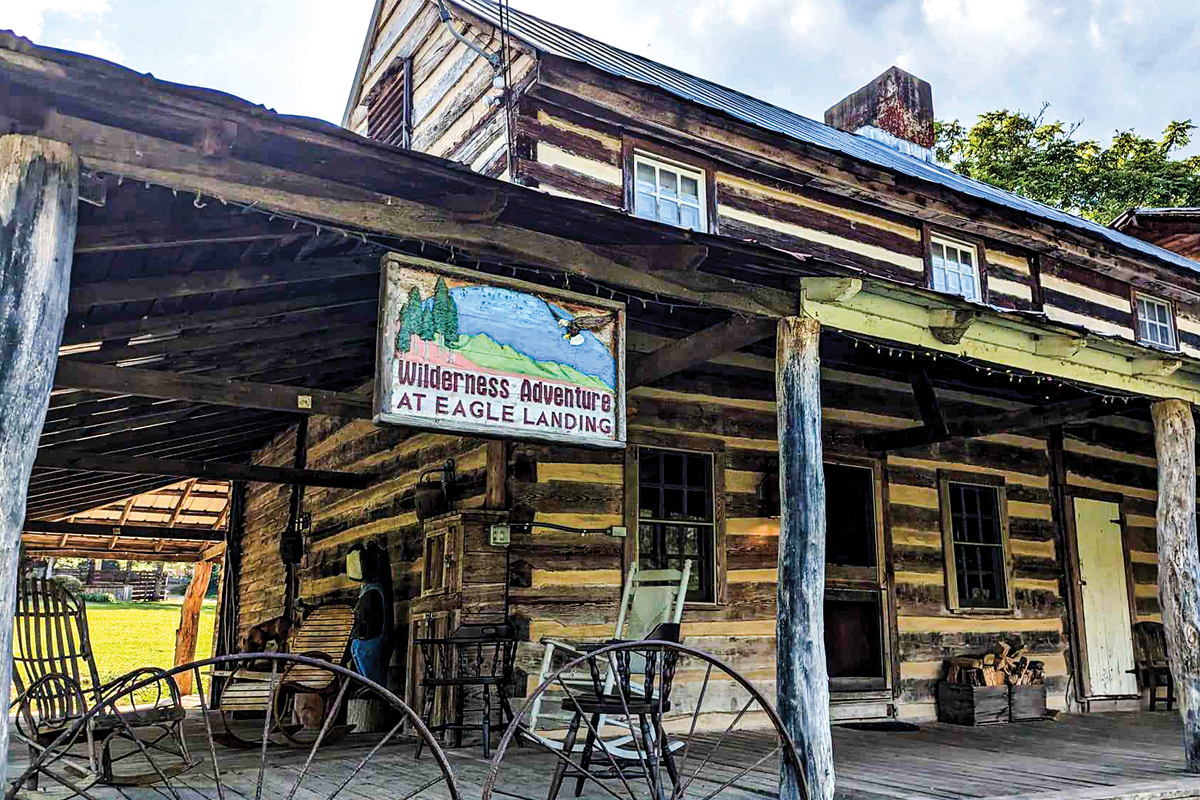
I had reserved a bed in the bunkhouse, which I assumed to be the upper floor of the lodge. I finally tracked down a staffer who vanished, Wizard of Oz style, behind a curtain, and emerged to say, “You’re in Room 5.” It didn’t matter. My room, one of maybe six or eight bunk rooms, had beds for eight, but I was the only person there. I took my pick: a lower bunk near the window. Sheets, a blanket and a pillow were provided.
Twin Valley Riders is my local club in Virginia open to riders of all makes and varieties. I’m a founding member, helping start the club some 25 years ago. Most members enjoy riding touring, adventure or sport-touring bikes. The rally moved to Wilderness Adventure at Eagle Landing, a multi-sport recreation and lodging center in Craig County north of Roanoke, after several years at Willville Motorcycle Camp near Meadows of Dan.
Arriving the day before the rally officially opened, I’d brought myself a picnic dinner in case meals weren’t provided before the event started. I sat with some of my Twin Valley mates around a campfire afterward and watched a full moon rise over the eastern mountain horizon.
The next day, Friday, I planned a special treat for myself. I swung my leg over my Honda NC750X and went north to Covington, then Hot Springs, and then Warm Springs to the unique and wonderful Warm Springs Pools. U.S. 220 out of Covington is a fine mountain road, with close-up views of one of Virginia’s most notable waterfalls, Falling Springs Falls, near the top. After an unobstructed run up the mountain and past the falls, I was held up by another roadway maintenance stop. I was first in line and spent 20 minutes chatting with the flagger until I was let through.
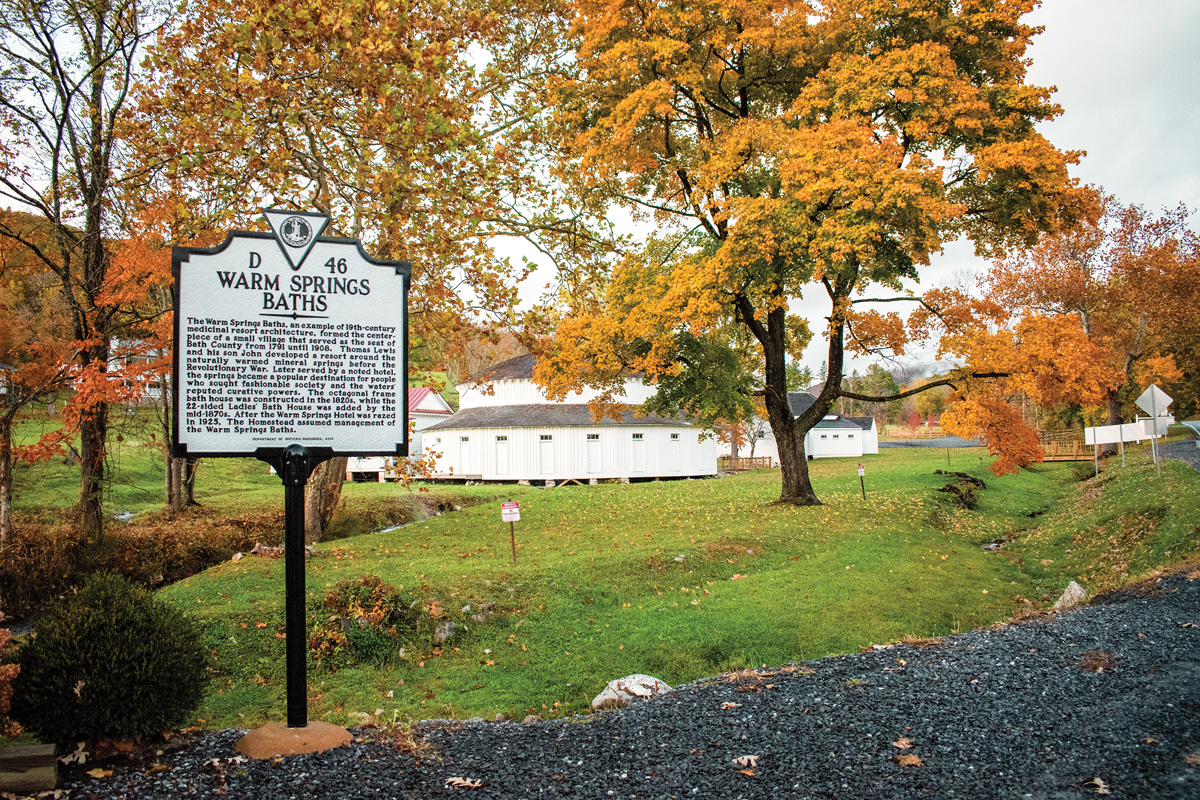
Formerly known as the Jefferson Pools, since our third president was known to have bathed there, this fascinating spa is now known as Warm Spring Pools. Their website says reservations are required, but when their phone reservation system failed me, I went anyway. There were only five of us ready to enter at our designated hour interval.
The original gentleman’s pool structure dates to 1761 and is widely considered the oldest spa structure in the United States. The second structure, the ladies’ pool house, was built in 1836. The pools closed in 2017 due to their deteriorated condition, but the Omni Homestead Resort extensively renovated and reopened them in December 2022.
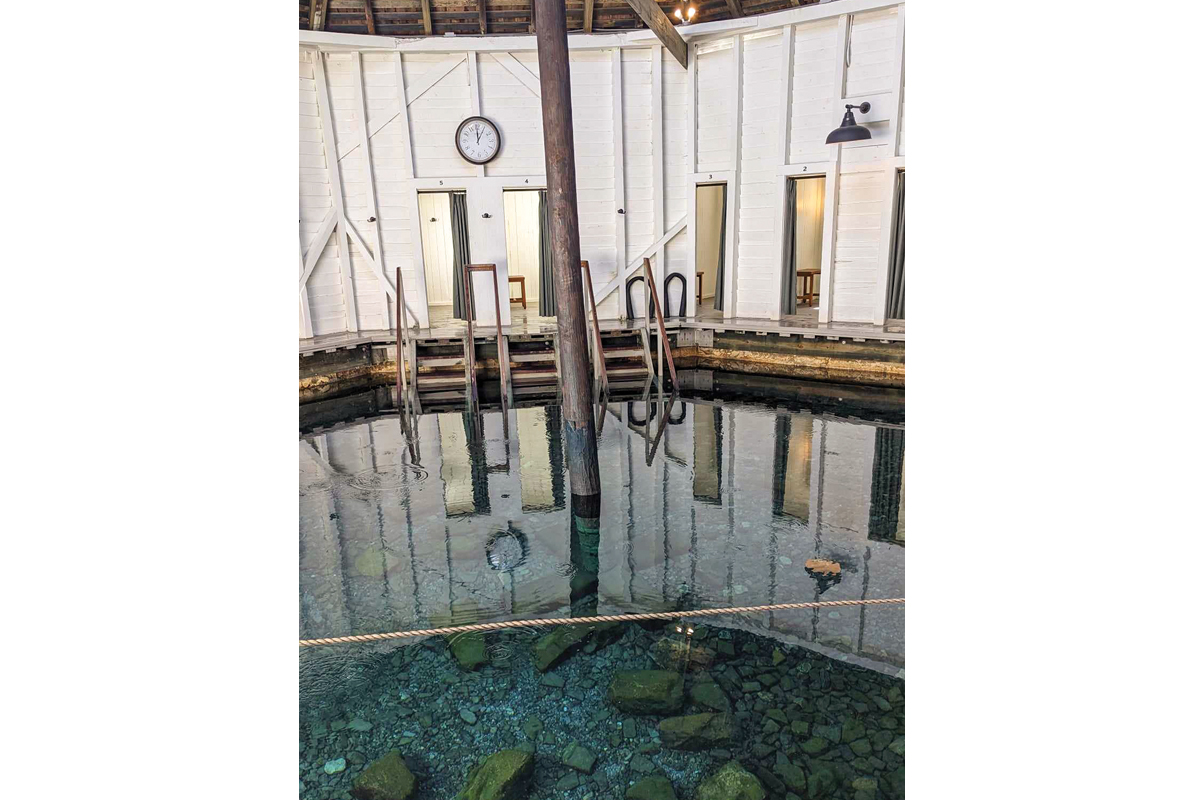
There are separate hours for family, adult co-ed, and gender specific soaking, the latter with swimsuits optional. I entered the octagonal wooden structure, grabbed a flotation tube, headed to one of the private dressing rooms radiating from the pool, and then descended a stairway into the 6-foot deep, crystal clear, 98-degree water. Not hot, not cold. There was a faint mineral smell, but those high-level minerals give the water a uniquely silky, sensual feel. It is said you could put a book with waterproof pages in the water and read it from the surface. I positioned the tube under my hindquarters, leaned back, and dropped my ears under the surface, with my toes rising above. Mini-bubbles rose from the pool floor and caressed my body. Sublime. I’m not roughing it.
An hour later, I came out $30 poorer, but pickled, wrinkled and blissed-out.
•••
I pointed the Honda south toward camp, this time avoiding the road maintenance area by taking a shortcut using Route 606 over Warm Spring Mountain from Carloover into Clifton Forge. This is one of those roads where Virginia’s Department of Transportation thoughtfully posted signs saying, “Curvy Mountain Road; GPS routing not advised.” Curves were constant and steep, like the Appalachian Trail with pavement, the switchbacks reminding me of the tornanti on Italy’s famous Stelvio Pass.
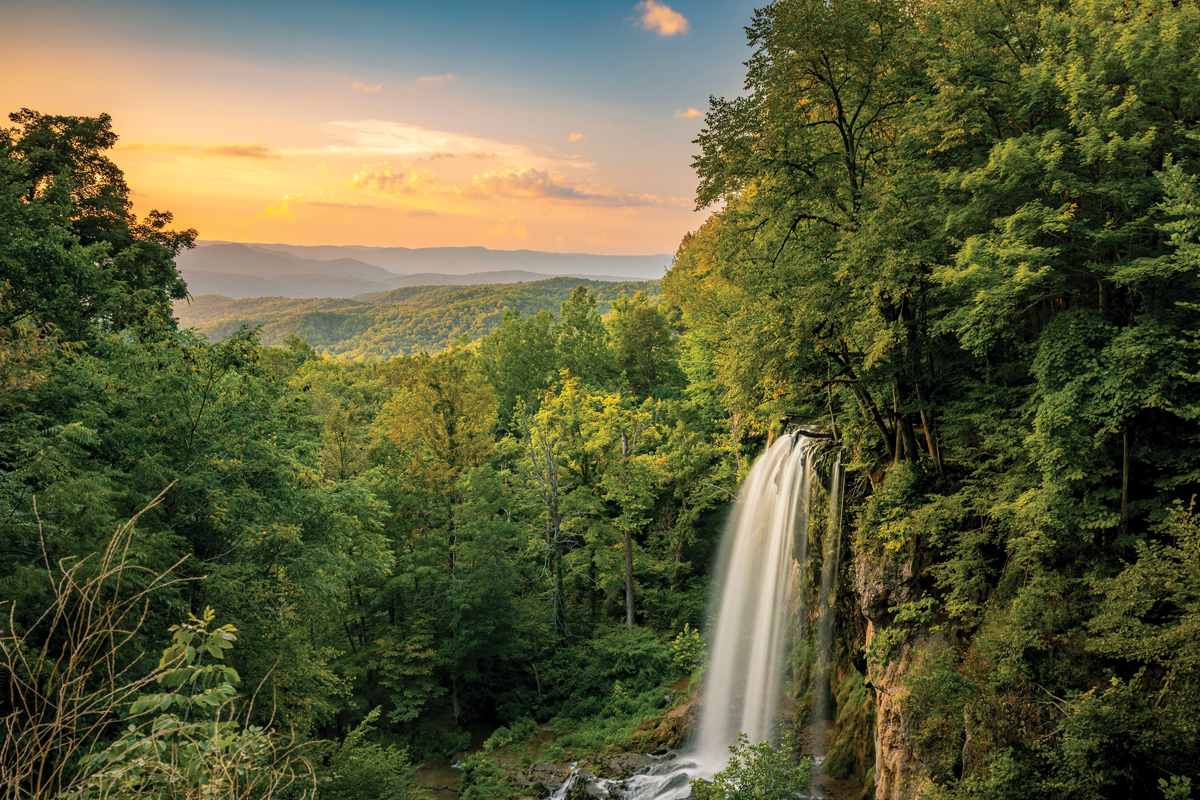
The area roughly between Giles County in the southwest and Bath County in the northeast, with Allegheny, Botetourt and Craig in between contains the largest concentration of publicly owned national forest land in the state, the George Washington and Jefferson National Forest, and is a big green splotch on the official state map. Mid-September is at the cusp of leaf change season, and the forests were resplendent in the bright, warm sun. The Honda purred along with its signature lazy, low-rev lope, effortlessly and quietly. As I like it.
Back in at Eagle’s Landing, I walked through the large tent area where many rally-goers were on lawn chairs, chatting. I found the TVR canopy and got reacquainted with old friends and met some new before walking back to the lodge.
A staffer named David told me the Department of Transportation had received some federal money and was planning to construct the multi-use Craig Botetourt Scenic Trail on an abandoned railroad corridor.
On the last few miles before camp and northeast of the county seat, New Castle, I quizzically found in many yards signs that said, “Derail the Trail.” The signs were posted by opponents, ex-pressing their disapproval. I’m a huge fan of rail-trails and have bicycled on most of them in the Virginias, so I was disappointed that some folks didn’t want it. I’m sure there are valid privacy and safety concerns, especially in places where the trail and the main road are the same. I hope things can work out, and I’ll be on my way back with my bicycle.
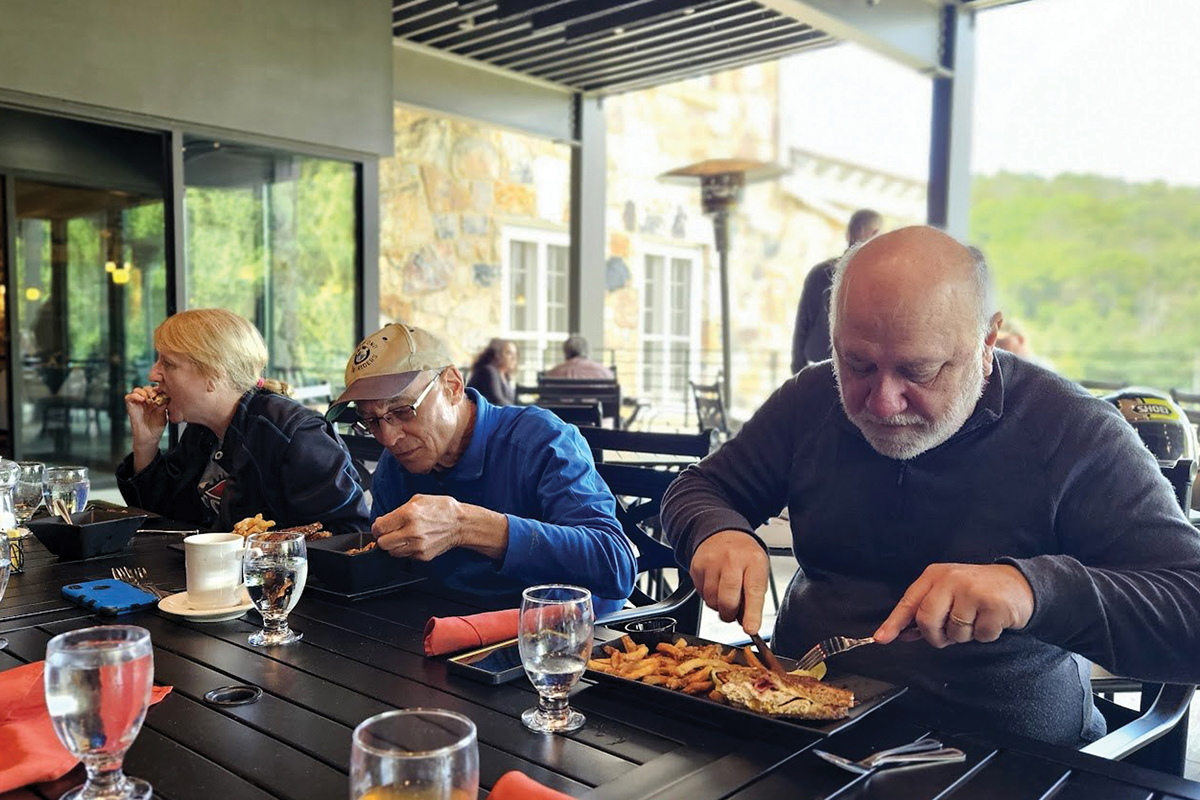
I expected meals to be provided buffet style, but instead a clerk took orders food-truck style at a window in the equipment storage barn and relayed them to the nearby kitchen, making each meal individually. After dinner, The Floorboards, an American roots rock ensemble took the lodge’s outdoor stage where under a full moon rally-goers enjoyed a lovely evening of friendship and music.
By the time the sandman had sprinkled magical sand in my eyes, I still had no roommate. I got a nice, hot shower (fluffy towels were provided), and then returned to my bunk.
•••
Next day, I was chatting up some fellows, talking about my plan for that day’s ride. Two of them — David from Bristol and Mark from Roanoke — decided to tag along. Our destination: Goshen, with the hopes of spotting Virginia’s most beloved motive landmark, the famous Norfolk & Western 611 locomotive.
Built in Roanoke during the steam era in 1950, the J-class 611 was one of 14 (numbered 600-613) built and the only one remaining. After lengthy planning and arrangements, the 611 was in Goshen in preparation for the following several weekends’ excursion runs up-valley to Staunton and back. Major crowds were expected to descend on the tiny village to have the once-in-a-lifetime experience of riding behind a steam locomotive. We went to have a look.
There was a huge grassy field with a newly placed gravel road and railroad tracks. A swarm of volunteer workers were patching up and repainting a vintage passenger coach, a loud diesel air compressor humming nearby. Then we heard the unmistakable whistle of the grand lady of N&W’s steam era, the magnificent 611, coming toward us on a parallel track.
The sole survivor of the J-class locomotives, the 611 is everything you envision a grand steam engine to be: big, black, streamlined, and muscular, with exoskeletal linkages powering eight massive 7-foot diameter wheels. It is the largest and most powerful coal-burning steam locomotive in the country, and watching it approach, belching steam and cinders, is a complete adrenaline experience. The 611 is a National Historic Mechanical Engineering Landmark, something special to me because I have a mechanical engineering degree from Virginia Tech, where many of 611’s designers were educated.
Alas, the 611 had a short working life, primarily hauling N&W’s premier passenger trains from Norfolk to Cincinnati and suffering major crash in 1956. It was retired from regular service in 1959 when the entire fleet was replaced by diesel locomotives. Now owned by the Virginia Muse-um of Transportation in Roanoke, it has been hauling excursion trains infrequently since then, largely dependent upon the whims of the major corporations, Norfolk Southern and CSX Transportation, which control most of the region’s tracks. Riding an excursion seven years ago prompt-ed me to write the latest of my eight books, “Chasing the Powhatan Arrow.”
One of the volunteers said his father owned the land in Goshen that was being turned into a terminal for excursion operations. The tiny village of Goshen has not a single hotel or restaurant I could find, but hundreds of rail fans would be inundated the town the following weekends to either chase, watch or ride behind the glorious 611.
After snapping some photos, northward we went, following the rail line that the excursions, dubbed the “Shenandoah Valley Limited,” would be taking into Staunton. The fall foliage our mid-Atlantic is famed for was just underway, and the route through Craigsville, Augusta Springs, and Buffalo Gap was resplendent.
•••
I had explored Staunton before, so we bypassed the city and turned southbound on Route 252 with its lovely, quaint villages of Middlebrook and Brownsburg before turning back west through Goshen Pass, a steep-walled water gap in the Little North Mountain, carved by the passage of the Maury River.
Mark expressed an interest in seeing Clifton Forge, so he peeled off there. David and I headed back to the rally along Route 615, with my eyes wandering to catch glimpses of the abandoned rail line where the proposed Craig Botetourt Scenic Trail might run.
Back at Eagle’s Landing, I walked the campground where colorful tents sat against backdrops of forests, leaves fading from greens to yellows and reds. Most of the bikes were late-model ad-venture bikes, but there were some older bikes and dirt bikes as well, and even a sidecar rig. I sat at a picnic table and nursed a porter before the dinner hour, occasionally chatting with my fellow rally attendees.
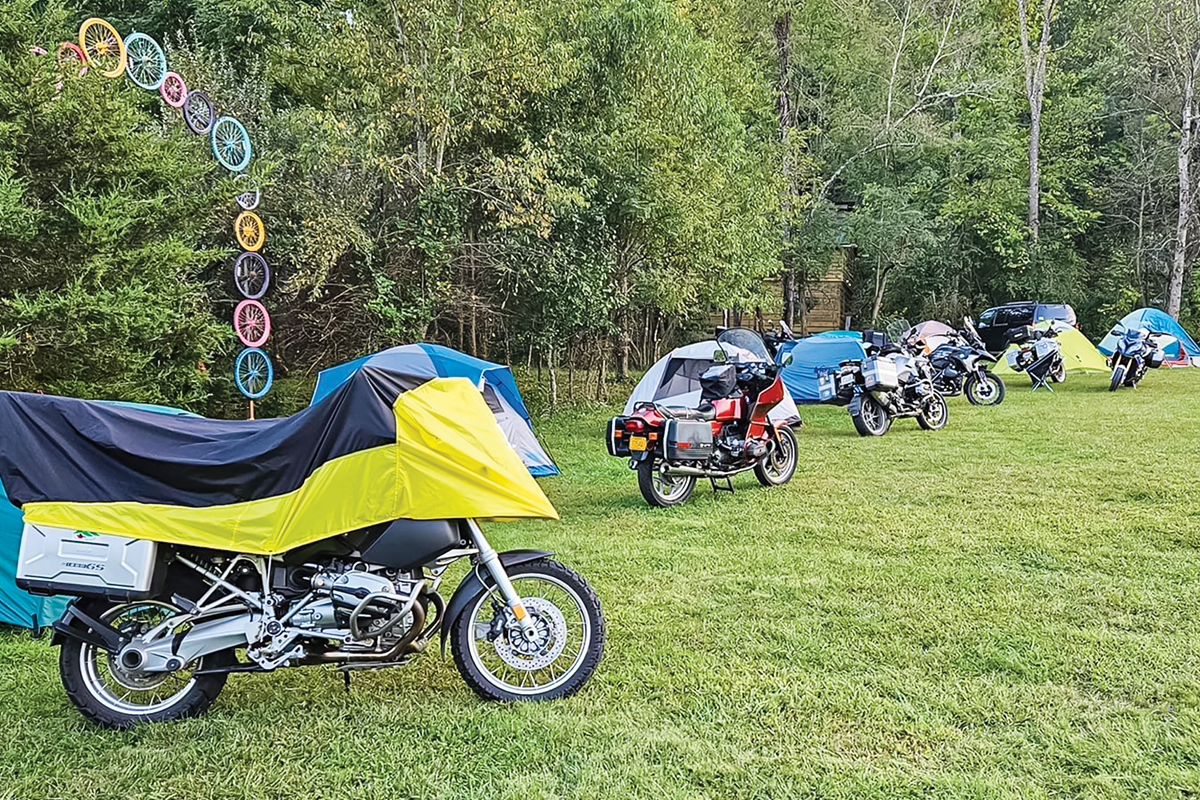
Hank Pfister, a founder of the Twin Valley Riders club, said he had returned to motorcycling in 1998, buying a BMW R80GS from his brother.
“I was looking to link up with other riders. When I’d see another BMW, I’d reach out to the rider. I thought we needed a way to communicate with each other,” he said. “I wasn’t intending to start a club, but just to get to know some other riders. I placed an ad in the classified section of the local daily, the Roanoke Times, and said, ‘Oilhead, airheads, and K-bikes — if you know what I’m talking about, let’s meet for breakfast,’ and set a date. To my surprise, about 15 people showed up.”
At that meeting, the club was born. A month later, a name was adapted, representing the Roanoke and New River Valleys. I was at that meeting as well, and we decided the club would be open to riders of all marquees, which was good for me because at the time I didn’t own a BMW.
“The club has been on an even keel, a steady growth pattern, since then,” Pfister said. “I’m pleased that we’ve been able to overcome a few issues and we continue to welcome new members. The rally started at Willville around 2010. We decided to move here, and it’s worked well.”
He said he thought the attendance was around 100, but the club absorbed all the costs with attendees purchasing their own camping or bunkhouse and food options from the camp. They didn’t charge for admission, paying for the music and door prizes from prior rally proceeds.
“I’ve been to Willville, but this is a much better venue for this rally,” said Mike Allen, a rider from Virginia Beach. “It has amenities that Willville doesn’t have. The food is great. We’re eating off plates with real silverware and cloth napkins. That steps it up for me. I don’t mind it being spread out. And I like the other options here, like hiking and floating the creek.”
He and his friend Steve Radcliffe of Chesapeake rode to the rally together.
“It was good for me. I’d come back in a heartbeat. This is a great place. I love the service, the servers, the layout, the whole nine yards. You can do a little bit of everything,” Radcliffe said.
After dinner, we had more music, this time provided by the Harwell Grice Band, a five-piece string band, which played an eclectic mix well into the night.
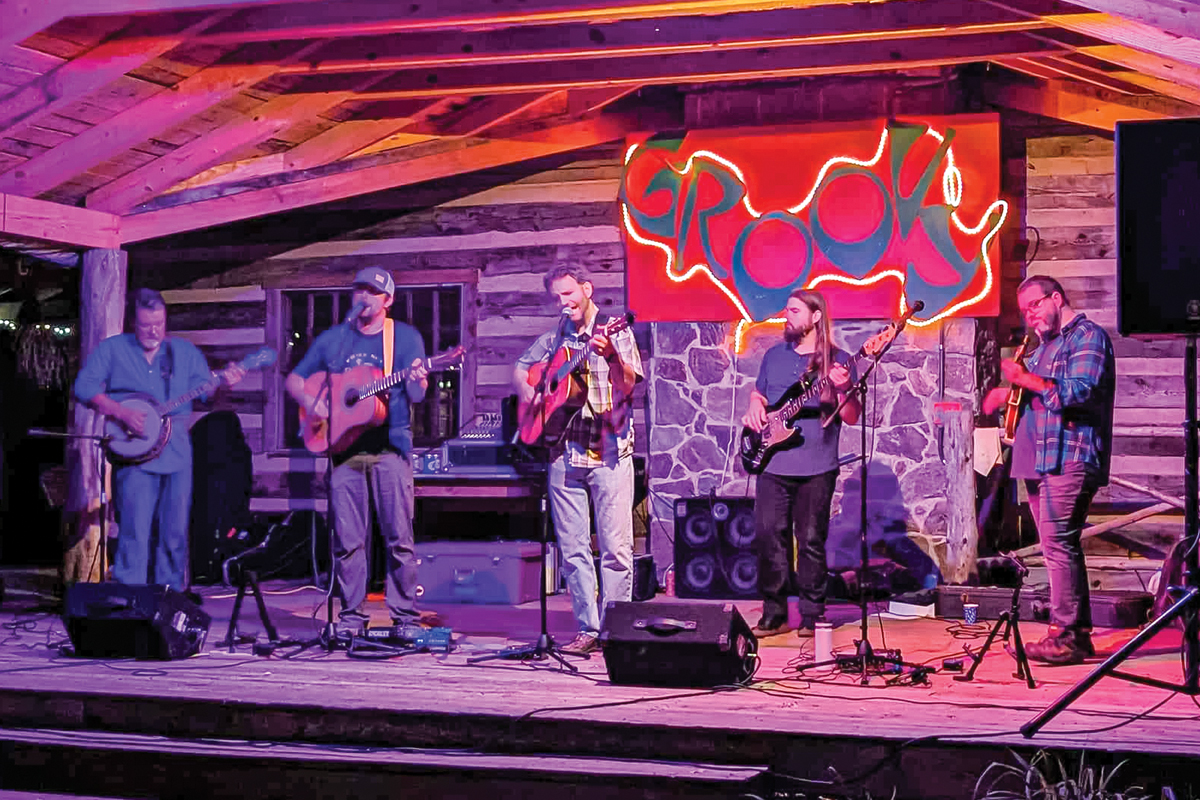
I retreated to my bunk room, in which I was still the sole occupant, and fell blissfully asleep, waking to a dream of walking a grassy field high in the Swiss Alps, overlooking immense glacier-clad mountains, with sparkles of shimmering lights above in the afternoon sky.
I lingered a bit on Sunday morning, with nothing pressing me to get my trip home underway. After a nice breakfast of fried eggs, potatoes and toast, I finally got motivated and packed my gear. I took a different route home, riding Route 42 over the Eastern Continental Divide and then along-side Sinking Creek back to the New River drainage from New Castle to Newport. In a region with uncountable valleys snuggled between long Appalachian ridgelines, the Sinking Creek Valley is visually noteworthy, dotted with pre-Civil War homes, pastures, and shrink-wrapped bales of hay. The road itself is a motorcyclist’s dream, as fast as you want it to be with zero traffic.
The homeward trek offered time to reflect on my rally experiences and the comradery felt with other riders.
“It warms my heart that other people can see what motorcycle people are all about. There have been no rude experiences, I’m sure. We’re good ambassadors for the sport of motorcycling,” Radcliffe said.
For more information, visit twinvalleyriders.org.
Michael Abraham is a businessman and writer based in Blacksburg, Virginia. He has eight books including his most recent, “Chasing the Powhatan Arrow, a Travelogue in Economic Geography.” His books are available on his website at mabrahamauthor.com.


